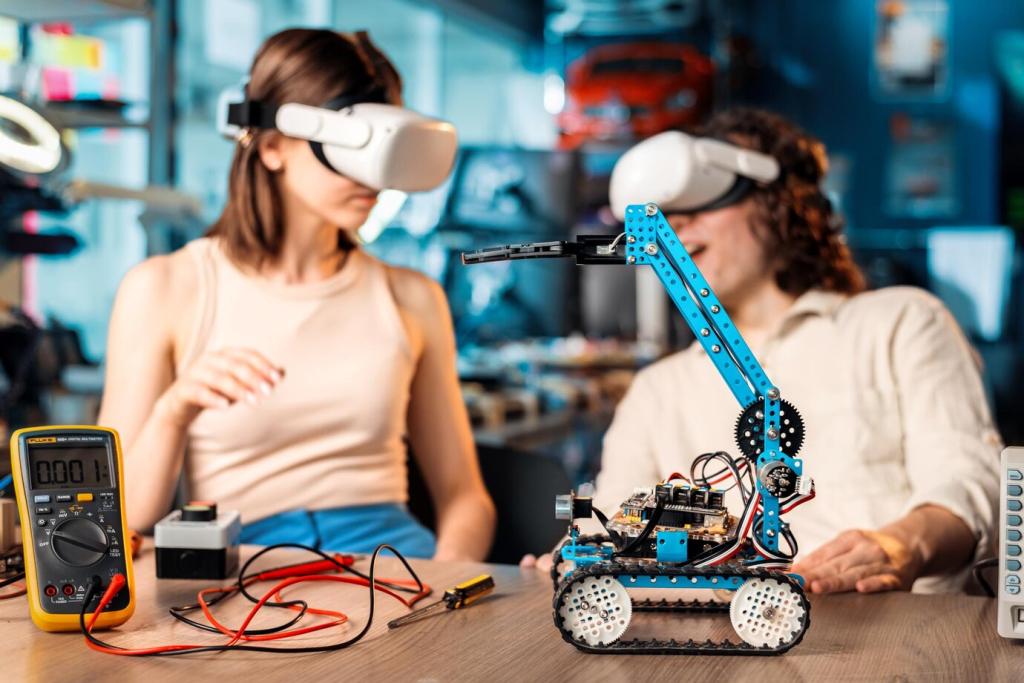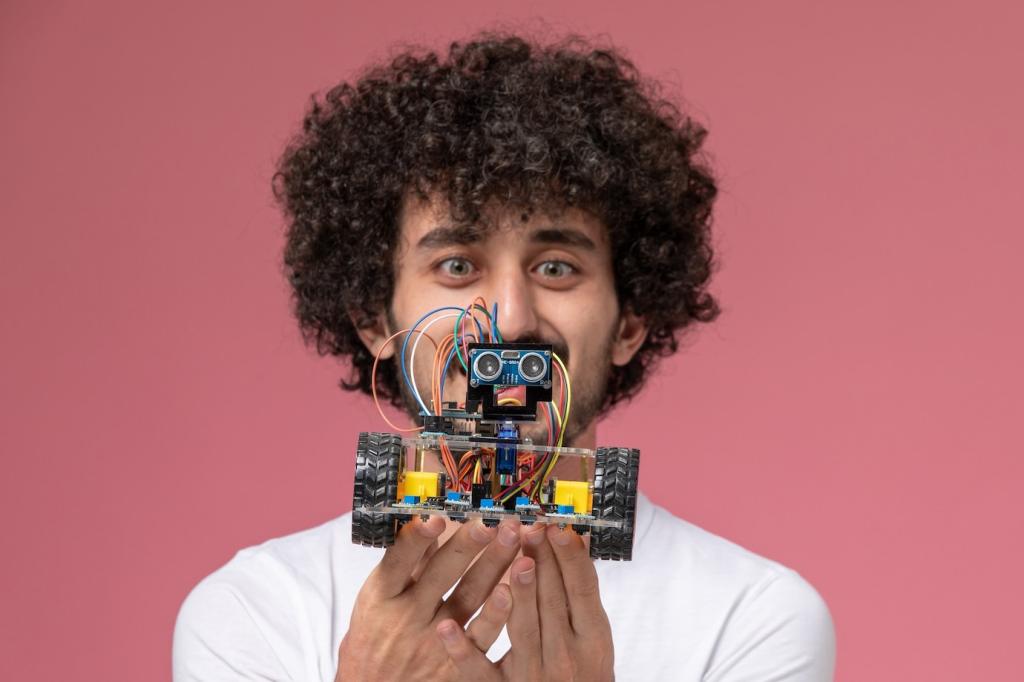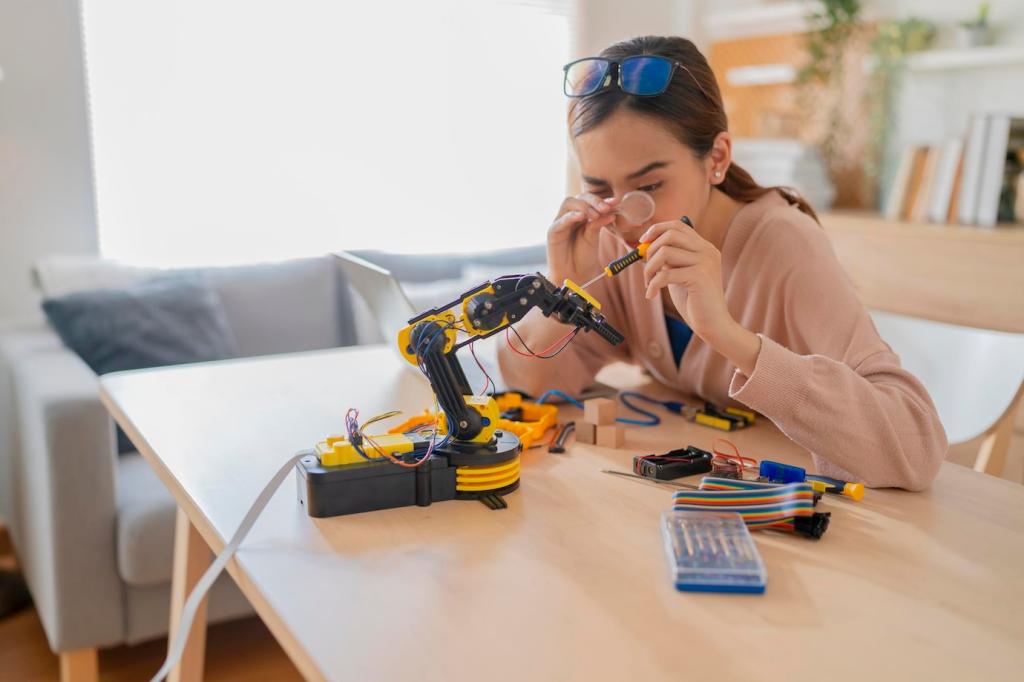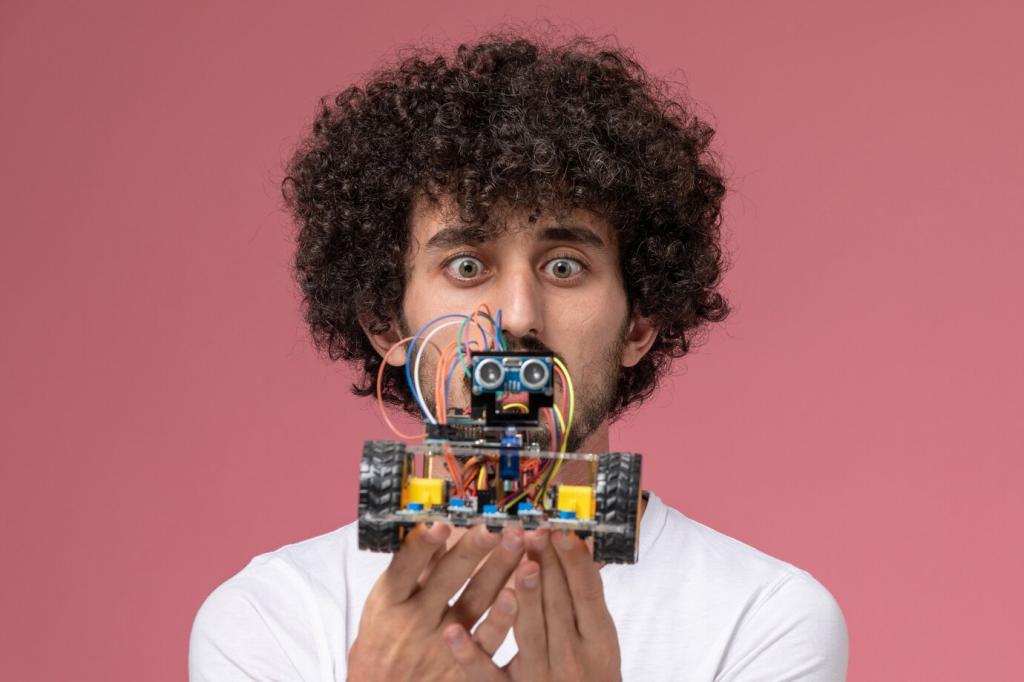
Chosen Theme: Best Robotic Kits for Kids to Learn Programming
Welcome, curious builders and supportive grown‑ups! Today’s chosen theme is the Best Robotic Kits for Kids to Learn Programming. Dive into playful projects, age‑smart recommendations, and real stories—then subscribe and share your family’s favorite kits and wins.

Age fit, safety, and joyful design
Look for sturdy parts, rounded edges, and clear visuals that match your child’s stage. Younger builders need color‑coded elements and magnetic or snap connections, while older learners benefit from modular pieces that invite tinkering and safe experimentation.

Hardware that meets software halfway
The best kits pair reliable motors and sensors with intuitive apps. A light sensor or ultrasonic rangefinder becomes magical when code makes it react. Seek kits where hardware feedback is immediate, encouraging rapid testing and playful discovery.

Curriculum, projects, and progression
Strong ecosystems offer guided missions, open‑ended challenges, and clear paths from blocks to text. Look for lesson plans, bite‑size tutorials, and extension ideas so kids grow from simple loops to sensor fusion and real problem‑solving.
Starter Picks by Age and Confidence
For newcomers, choose kits with large, tough components and icon‑based programming. Screen‑free or simple block apps help kids grasp sequences and cause‑effect. Early wins—like making lights blink or a robot roll—spark confidence and joyful experimentation.
Block programming for fast feedback
Drag‑and‑drop blocks make abstract ideas tangible. Kids see loops and conditionals as colorful puzzle pieces, quickly testing ideas. This immediate feedback encourages curiosity, reduces fear of mistakes, and builds the logical foundation needed for typing code later.
MicroPython and Python when curiosity deepens
Python‑capable kits let learners step into real programming with readable syntax. Switching from blocks to MicroPython on the same robot keeps continuity, showing that the logic they mastered translates directly into professional, widely used languages.
C/C++ for embedded thinking and performance
Some advanced kits unlock C/C++, teaching precision and hardware awareness. Students learn memory constraints, timing, and interrupt basics, gaining insight into how robots sense, decide, and act—skills that transfer to electronics, engineering, and beyond.
First Project Roadmap: Build, Code, Celebrate
Unbox with intention and ask curious questions
Lay out parts, name each sensor, and guess what it does. Ask, “How might a robot know a wall is near?” This simple inventory ritual builds agency, sparks predictions, and invites your child to become the project’s lead investigator.
Write a tiny loop that does something delightful
Start with a loop that blinks, beeps, or moves, then add a condition using a button or sensor. The moment a robot reacts to your child’s idea is electrifying—celebrate it loudly and encourage playful modifications and shared discoveries.
Share the win, then iterate with one challenge
Record a short video, send it to family, and ask for applause. Then add one twist—turn longer, follow a tape line, or stop near a book. Small, additive goals sustain momentum and make learning feel like an adventure.
Mia struggled with a wobbly line follower until she graphed sensor values and tweaked thresholds. Her robot finally traced the tape smoothly, and she shouted, “It listened!” That day, thresholds and conditionals stopped being scary math and became power.
Stories from the Workshop: How Kits Unlock Thinking
Jamal’s rover kept crashing into chairs. Instead of giving up, he added print statements and discovered his distance sensor faced the wrong way. The fix took minutes; the lesson—that bugs are clues—will serve him in every future coding project.
Stories from the Workshop: How Kits Unlock Thinking
Stretch Challenges that Build Real Skills
Have the robot search for a dark square while maintaining a safe distance from walls. Combine light and ultrasonic readings, then log data. Kids learn to reconcile noisy inputs—an authentic skill professional roboticists practice daily in real environments.

Community, Competitions, and Support That Keep Kids Engaged
Join maker spaces, school clubs, or online communities where kids post code, ask for help, and swap ideas. Peer feedback turns struggles into puzzles, and victories feel bigger when a friendly crowd celebrates each new breakthrough together.
Community, Competitions, and Support That Keep Kids Engaged
Local fairs and student challenges provide deadlines and direction without pressure. Kids learn teamwork, planning, and presentation. Even a simple demo day at home, streamed to relatives, motivates careful coding, documentation, and respectful collaboration.
Community, Competitions, and Support That Keep Kids Engaged
Set a weekly build hour, keep a notebook, and capture short videos of each milestone. Encourage kids to post questions and subscribe for fresh project prompts. Small, consistent steps make robotics a lasting habit rather than a weekend fling.
